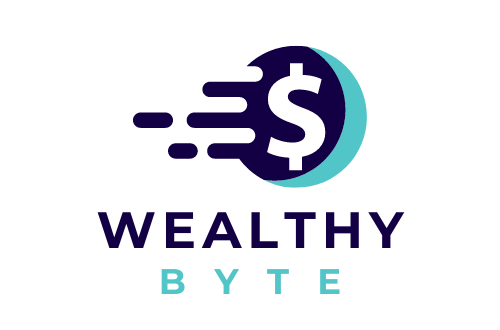Blockbuster was one of the largest home video and movie rental chains anywhere in the world. Founded in 1985, the brand spread like wildfire, with thousands of brick-and-mortar stores spread across the United States and several other countries.
But with increasing competition from emerging companies like Netflix, Blockbuster eventually faltered. Ever since it disappeared behind the shadows of more convenient platforms like Netflix and Prime Video, one question is often echoed on the internet – what happened to Blockbuster?
Unfortunately, the story isn’t so nice.
Blockbuster filed for bankruptcy in 2010 after struggling to regain its footing. The executives launched a restructuring plan which failed magnificently. The last Blockbuster store locked its door permanently in 2013.
But as a brand that monopolized video rental and faced no competition until the early 2000s, how can a venture as big as Blockbuster simply disappear?
In this article, we will answer all your questions.

Why Did Blockbuster Shut Down?
Blockbuster had a near-perfect run till the digital revolution started. Before that, people were quite content to rent videos and movies by visiting physical stores personally.
The brand originally grew in popularity because of the wide selection of titles it offered. Independent video stores, at that time, could only handle recording and tracking 100 movies at a time.
Blockbuster, on the other hand, was capable of tracking more than 10,000 VHSs at each of their stores because of their revolutionary barcode systems.
As such, despite their lucrative late fees, Blockbuster became a hit in the market, running over 9,000 stores in the US and employing 84,000 people globally at their peak. The company also recorded 65 million registered customers at one point, a whopping figure.
With such a healthy business model, one would think that Blockbuster was the only player in the market that would survive. But the monopoly did not last long as other players entered the arena with a significantly different strategy.
The Decline of Blockbuster and the Rise of Streaming Services
One of the major reasons why Blockbuster failed is that it never really pivoted to offer streamlined digital services to its customers.
Netflix entered the competition in the early 2000s. While it was only a startup, the company had some interesting ideas.
They started the concept of DVD rentals by mail. The downfall of Blockbuster and the dominance of DVD-by-mail services was not abrupt.
Initially, people did not feel convinced as the delivery of services was too slow. But gradually, they started liking the idea of doing away with Blockbuster’s high late fees and paying for services on demand.
Shortly afterwards, Netflix introduced digital streaming services and other companies like Hulu, and Amazon Prime Video joined in, leading to a significant dip in the video rental industry.
Ultimately, Blockbuster’s revenue suffered significantly, and they lost a huge chunk of the market share.
Blockbuster’s Struggle to Compete in the Digital Age
Blockbuster’s defeat to Netflix has a karmic appeal to it.
In 2000, Reed Hastings, the now-popular founder of Netflix, launched a proposal to form a partnership with Blockbuster, wherein Netflix would launch and look after the online division of Blockbuster. In return, Blockbuster should advertise Netflix in its physical stores.
But John Antioco, the CEO of Blockbuster, merely laughed at the idea.
Today, Netflix has a valuation of around $190 billion, while Blockbuster is nowhere to be seen. The disparity in their fates makes us wonder – what went so wrong that it completely annihilated the legacy of Blockbuster in the movie rental market?
Unfortunately, the mistakes were all internal.
Blockbuster’s Infamous Blunders
The Blockbuster team, including CEO John Antioco and other board members, made two expensive blunders that allowed digital platforms like Netflix to trample over them on their way to success.
So, what are these blunders?
Delayed Reaction from the CEO:
John Antioco never took Netflix’s business model seriously. And the company that could’ve been Blockbuster’s partner eventually became its greatest competitor.
Unfortunately, John Antioco took some time before he realized that Netflix was a serious threat. He tried to pivot and change the entire business model.
He even launched some online services that would cost the company around $200 million. Unfortunately, none of the methods work as Netflix had already gained a solid footing in the industry.
Internal Conflicts
Antioco was the CEO when Netflix started soaring. In desperation, he tried to make some big changes to adapt to the dynamic needs of the market. Unfortunately, he started making these changes too fast without giving the other members some time to adjust.
Firstly, he tried the DVD-on-mail services that Netflix had already started. But that did not perform well on the market.
After that, he also tried to remove the late fees that many Blockbuster loyalists were complaining about. Unfortunately, a large part of Blockbuster’s revenue was dependent on these late fees.
The board estimated a loss of around $200 million with this one move. So, they fired Antioco after losing confidence in him and appointed Jim Keyes instead.
Keyes reversed Antioco’s final decisions but could not save the company. It went bankrupt after 5 years.
Blockbuster’s Bankruptcy Debacle
After struggling against its largest competitor Netflix and some other streaming services, Blockbuster eventually filed for bankruptcy in 2010.
The company recorded ginormous profits as they could not enter the online rental market on time. They joined the industry in 2004 after Antioco finally got the board’s approval for the decision. But by that time, Netflix was already a popular household name.
The lack of profits and cash flow, coupled with the piling debts of the company, eventually paved the way for the only solution that the executives could think of – declaring bankruptcy.
But the brand did not shut down there. There were some attempts to restructure the organization and reinstate the brand to its former glory.
One of the first steps to doing so was finding the right buyer. That came in 2011 when the satellite TV company DISH acquired Blockbuster for a total value of $320 million. DISH then launched a service called Blockbuster On Demand, offering a vast library of movies to their subscribers.
However, the application did not perform well and is no longer available for DISH customers.
By 2013, Blockbuster had closed down the remaining of their brick-and-mortar stores across the United States. However, one store, popularly called ‘The Last Blockbuster’ is still open in Bend, Oregon.
However, that store does not rent out copies of DVDs. Instead, it makes most of its revenue by selling merchandize and nostalgic items associated with the brand.
The truth, however, is that since 2013, Blockbuster has only been a distant memory for people who spent the 80s and 90s visiting the brand’s stores every week to pick out their favorite movies and titles.
Is Blockbuster Still in Business?
Blockbuster is no longer in business ever since the closure of its last physical store in 2013.
Ever since then, the only commercial mention of the brand came in 2020, when a documentary titled ‘The Last Blockbuster’ shed light on the entire history of the brand, detailing the rise and fall of the legacy-rich company.
There are no significant attempts to restore Blockbuster back to where it belonged. But even so, people have recently started gaining hope.
But why is that? Let’s find out.
Blockbuster Coming Back? Facts and Opinions
By 2014, Blockbuster had disbanded most of its business operations. The company had virtually shut down after a series of bad years on the market. But recently, people started noticing that the official Blockbuster website is still active.
It allowed some people to gain some hope that the veteran brand is preparing to make a comeback.
But that’s not all.
The homepage of the website has a significant message – “We are working on rewinding your movie.”
That is a direct hint that Blockbuster might have some plans for the future.
The Twitter account of the brand is very active as well. Earlier in March, Blockbuster tweeted – “New Business Idea: We’re going to come back as a bank and use VHS and DVDs as currency. Time to visit your mom.”
Other Tweets have also surfaced since, mostly humorous in nature, flirting with the idea of Blockbuster’s return as a streaming service.
These are the facts. But is it, in our honest opinion, possible for Blockbuster to make a comeback and sustain itself?
Can Blockbuster Come Back?
The answer is yes.
While Netflix, Prime Video, Hulu, and others have definitely captured the video streaming industry, Blockbuster can mark its legacy by starting other types of rental services. Gaming rental services, anybody?
That could be a hit.
It’s a fact that Blockbuster still has a huge amount of support on the internet. People are sure to listen to what it has to offer. So, if Blockbuster goes ahead with an interesting idea, there’s no reason why it cannot become as successful as it was in 1980s and 1990s.














